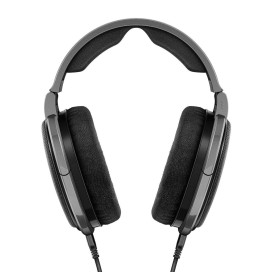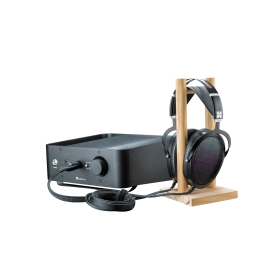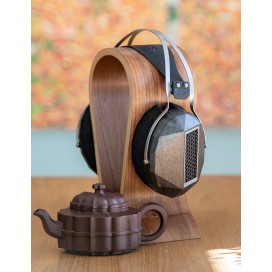
Different driver types: which one is better?
TLDR:
All types of drivers have their raison d'être, advantages and disadvantages. As is so often the case, it depends on how they are implemented in practice and which headphones are available to the end customer at what price.
So let's get started.
And with a confession: Although I am a trained audio engineer, I have not yet built any speakers/headphones myself or measured their individual parts for certain properties. I base my statements here on measurable, or at least verifiable, effects in practice. Measured values are from third parties and, in my opinion, would have already been refuted if there were blatant errors in them. Statements from manufacturers without other sources are mentioned for the sake of completeness, but are not taken into consideration.
The dynamic driver

The bread and butter of the audio industry. With loudspeakers, you often see exotic tweeters such as ribbon or AMT, but at least in bass, there's no getting around the good old dynamic driver.
The way it works is always the same: Take a membrane that has to be stabilized somehow at the edge and in the middle, for example by a spider and a cone, attach a magnet behind it and ensure that a coil of wire is wound around it. A current supply now ensures that the membrane moves forwards and backwards.
Pros:
- The advantage of dynamic drivers is that they are cheap - available in bulk, and the biggest manufacturers of headphones such as Sennheiser and Focal rely exclusively on dynamic drivers for their mass market models.
- Enable lightweight construction: The lightest headphones are still dynamic drivers.
- Sound: All headphones that are praised for having particularly natural mids, such as the HD650, are dynamic drivers made of "biocellulose" (paper). Whether this is due to the type of driver or whether we are all just so used to the sound of dynamic drivers and therefore think it is natural is a chicken and egg question, but I think we would shift our standards if another type of driver was superior in this characteristic.
Cons:
- If you really want to bring them to a high sound level, you have to invest a lot in material science again, whether you want to use biocellulose (paper), aluminum/magnesium, beryllium or something else - in DIY projects, such as those currently coming out of the 3D printer from enthusiasts, planar magnetic drivers are therefore often used.
- Sound: Dynamic drivers do not only have advantages in terms of sound - the disadvantage is that the principle has to find a balance between stiffness, resonance behavior and pressure - too large a diaphragm and distortion occurs too quickly. Too much excursion, and in the worst case it leads to clipping and the transient response suffers - therefore, no matter what compromise you make, the low bass is always a weakness of open headphones with dynamic drivers, see frequency responses here:

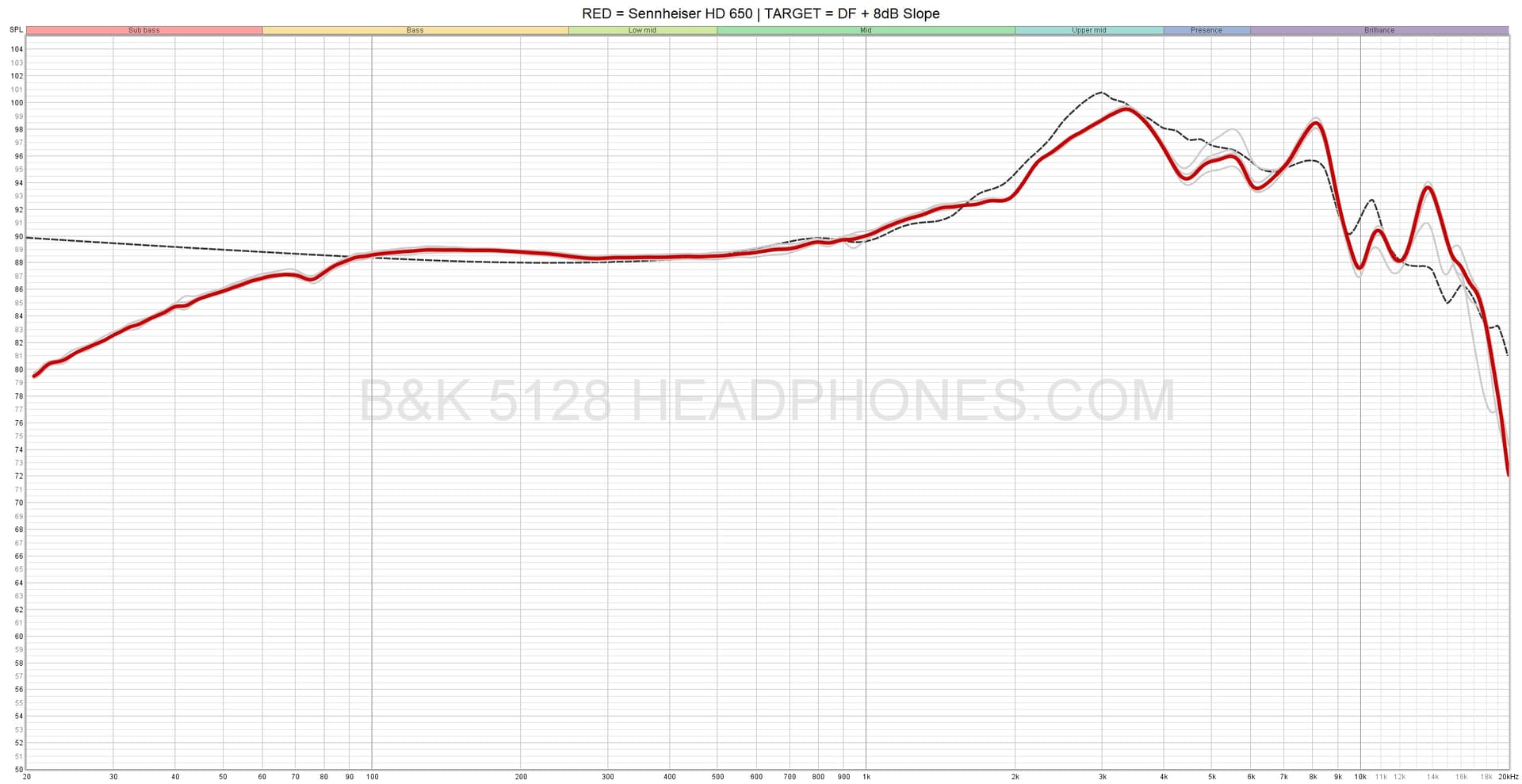

Other peculiarities:
- Dynamic headphones also represent a dynamic, frequency-dependent resistance for the amplifier. A tube amplifier can therefore change the frequency response of dynamic headphones and, in most cases, produce a boost in the bass. If you want to experiment with tube amplifiers, the choice of other driver types is rather limited.
Planar:


A relatively new driver technology, but one that has taken the market by storm relatively quickly. Take a large diaphragm that also carries the current conductor - no more coils, instead a conductor path winds from top to bottom on the diaphragm itself. For driver control, there are always a few magnets behind the diaphragm, sometimes also in front of it.
Pros:
- Sound: What is a problem with dynamic headphones is the bass - this is absolutely not the case here:
Depending on the tuning, you can produce absolute bass masters here, even though they are open headphones. The tuning is done, among other things, by the thickness of the diaphragm itself: A thicker diaphragm is slower, as it is heavier, but can generate decent pressure in the bass and can withstand the wildest EQ experiments with almost no distortion. If you make the diaphragm a little thinner, you can bring out even more detail in the treble range, and the bass will still be present on paper, i.e. linear without any drop-off - but rather ethereal, not really punchy.
See here:
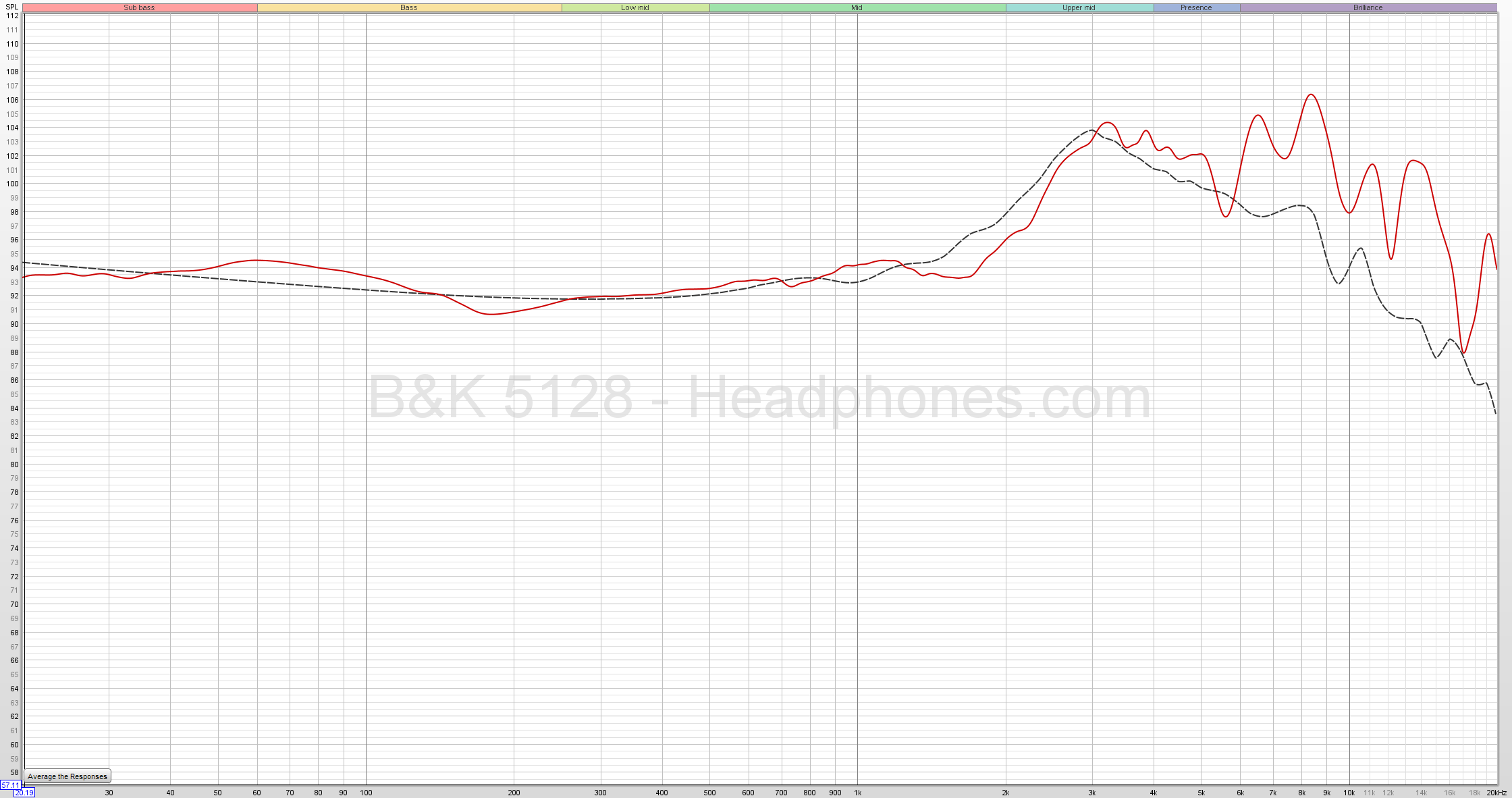
(Hifiman Arya Organic)

- Planar-magnetic headphones also have advantages in the treble range, as the diaphragm can start up and return to its resting state more quickly than dynamic headphones. For bass and treble, the trick is to simply make the diaphragm huge: instead of a circle with a diameter of 4-5 cm, you simply have a rectangle with a diagonal of 10-11 cm. You get the energy from the surface, not from the momentum.
Cons:
- The larger diaphragm and the magnets needed to control it are rather large and heavy. It will therefore never be possible to build the lightest headphones in the world with a planar driver, and smaller designs are also more difficult.
- Price: The cheapest planar headphones are well above what you can get in the way of affordable dynamic headphones - even if this no longer plays a role in the upper price segment, because for more than €500 you can get extremely competent products in both cases.
Other peculiarities:
- Since planar drivers are generally thinner than dynamic drivers, they are also more sensitive to a certain extent. Earlier Audeze models had the problem of the drivers cracking when they were put under pressure - for example by being stored on an Omega headphone stand. There have also been reports of damaged diaphragms when stored near construction sites where there is too much dust blowing in. However, this now seems to be a thing of the past.
Electrostatic:

This type of driver is so exotic that there are no nicer schematics for it online - it is also mainly associated with Stax, although Koss, Hifiman, even Sennheiser also have electrostats in their program and Shure even offers an electrostatic in-ear.
Pros:
- Sound: the electrostat takes what characterizes the planar driver one step further: an even thinner and lighter diaphragm that can be driven even faster makes many electrostats absolute monsters in terms of resolution and treble reproduction. Anyone who likes to listen to music on a molecular level will not be able to ignore electrostats for long.

See here: Hifiman Jade II
Cons:
- Sound: Due to the fact that the diaphragm is even thinner than that of planar drivers, most representatives here are also rather weak in the bass. There are balanced, even bass-strong electrostats, but for these you have to dig deep into your pocket (usually five figures). See also the frequency response of the Jade II.
- Separate amplifier required: As electrostats work with their own operating voltage, they also need to be powered by their own type of amplifier, commonly known as an energizer. These are compatible with all electrostats, but whether they sound good together is another question - and in most cases you will need a second amplifier for planar or dynamic headphones.
- Price: The fact that you always need an energizer for your first electrostat, inevitably drives up the price.
This would certainly cover 99% of the market, but experimentation is also needed to advance sound and research. Therefore, for the sake of completeness:
AMT:

Air Motion Transformer, basically a similar idea to the planar magnets, with a twist:
There is still a conductor that goes through the diaphragm, thus forming a component, so to speak. There are still permanent magnets - but the membrane is folded:
Instead of now oscillating forwards and backwards, the diaphragm folds apart and back together for each signal, which means an even larger diaphragm surface area that can be accommodated in a smaller space. The practical effect is speed.
Pros:
- With a forward-backward movement, the ratio of movement to generated sound pressure and speed is 1:1. With the AMT, it is 1:4, which ensures faster transients and a high degree of efficiency.
Cons:
- As far as we know, the principle has been used a few times in loudspeaker tweeters. With the HEDDphone 1 & 2, HEDD Audio has a proof of concept that the entire frequency spectrum can be covered, but whether other manufacturers do not use it because it is either patented, too expensive or too heavy cannot be judged from the outside. So far, the full potential of this type of driver depends on one company.
Ribbon:

Ribbon drivers are similar to planar drivers, but they are only anchored at two ends and are free-swinging on the other two sides.
In my opinion, ribbons are even more exotic than AMT drivers, as Raal Requisite is an established manufacturer and this type of driver is also used in loudspeaker tweeters - but Raal also started with a head speaker that was completely open and, from the point of view of many enthusiasts, still required an external subwoofer to complete the experience.
Raal now also has "normal" open headphones in its range, but these have such a low resistance (<1 Ohm!) that they need an adapter box to be driven by normal amplifiers at all. Quote: "A special interface in the form of a headphone stand has been developed for the new Immanis and Magna, which, together with a special cable (SATIS Copper or STAR-8 MKII Silver), enables connection to a "normal" headphone amplifier." Apart from the fact that Raal is the only manufacturer and the starting price for this technology is several 1000€, this does not seem very practical to me.
Conclusion:
Dynamic: Natural sound, flexible in terms of amplification, robust design.
Planar: Good compromise between electrostatic and dynamic for everyday use
Electrostatic: The best in terms of driver control and high-frequency reproduction, at the expense of flexibility and purchase price
Related Products
Founder of Level Audio, trained sound engineer and a hi-fi enthusiast and friend of good sound since a young age.





